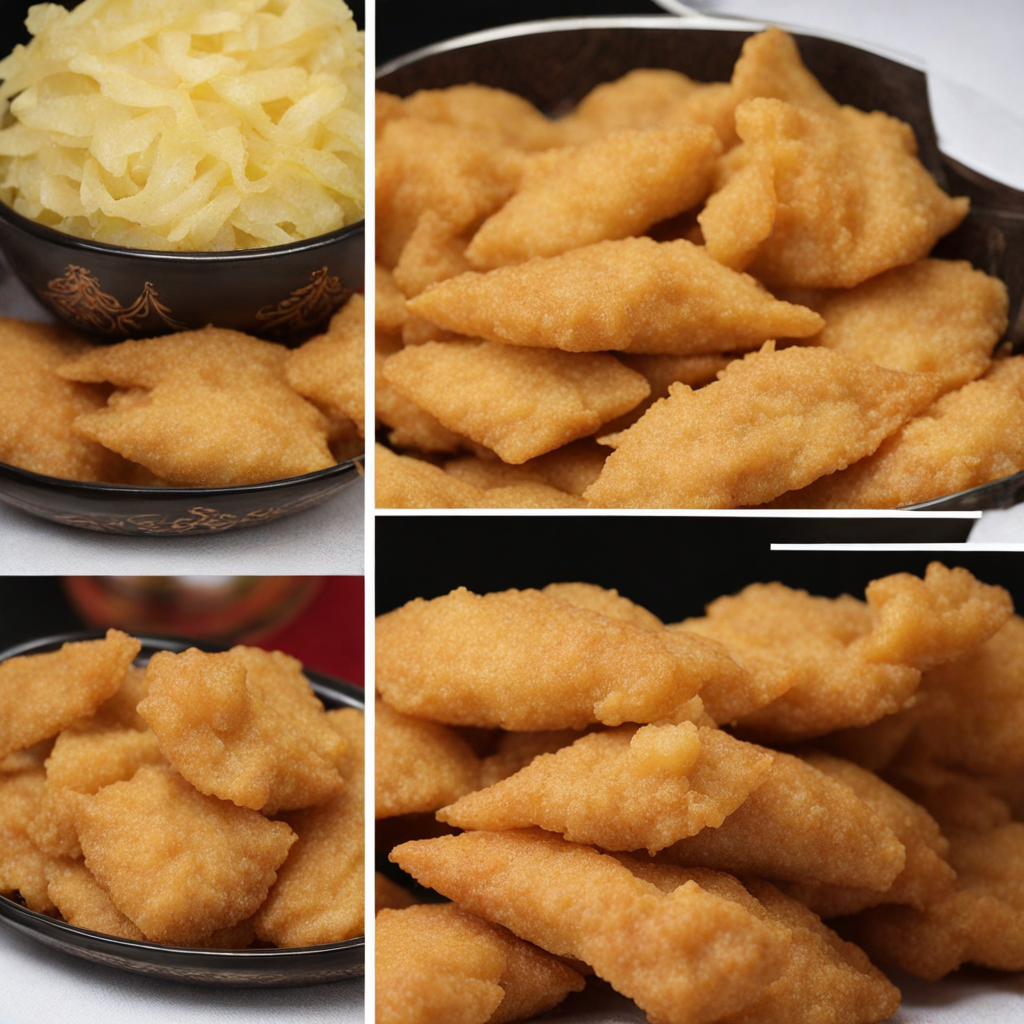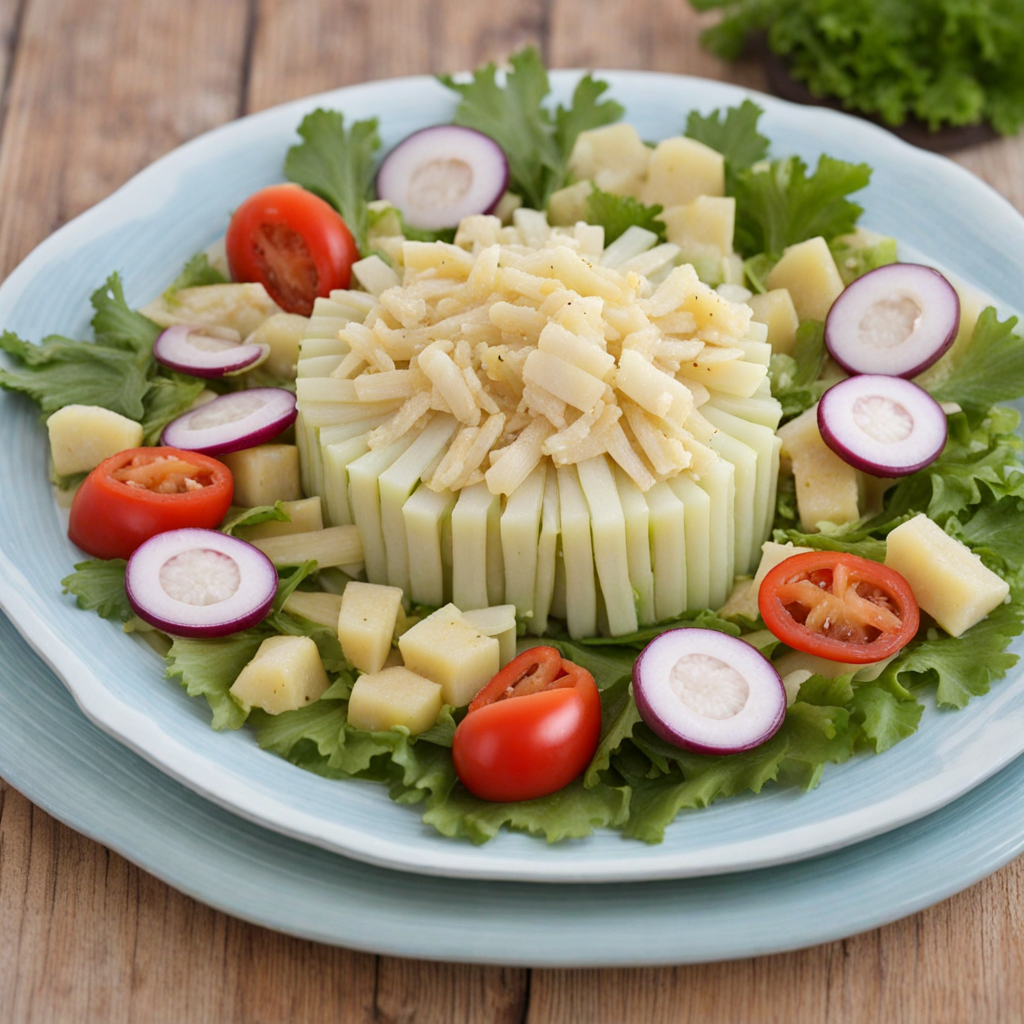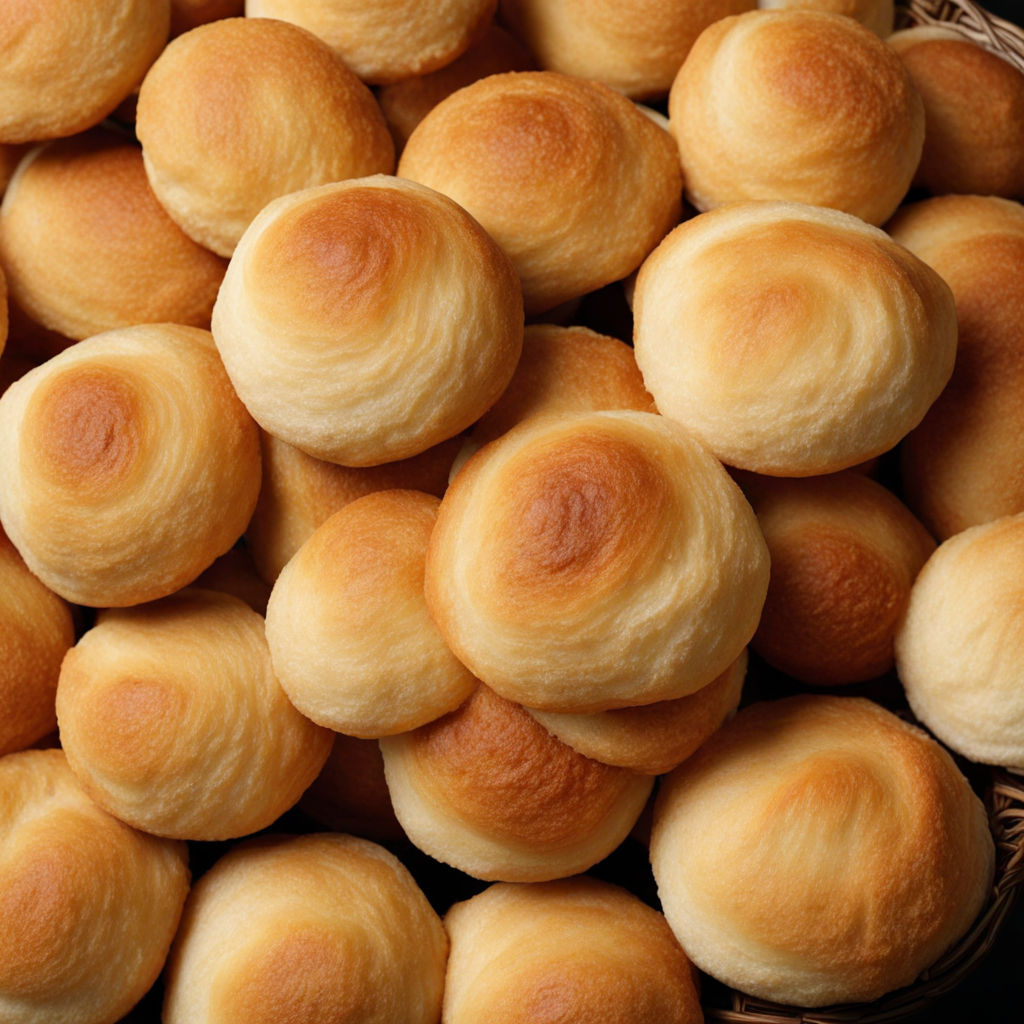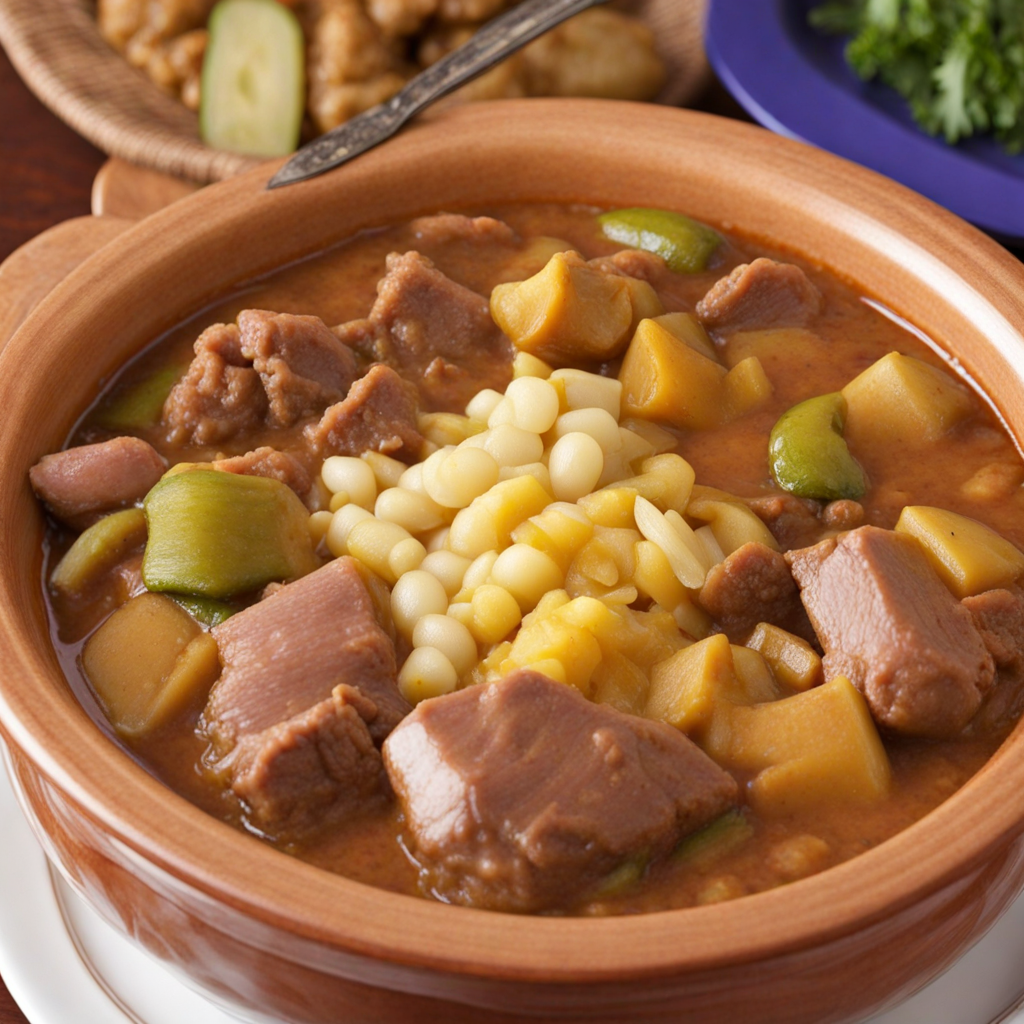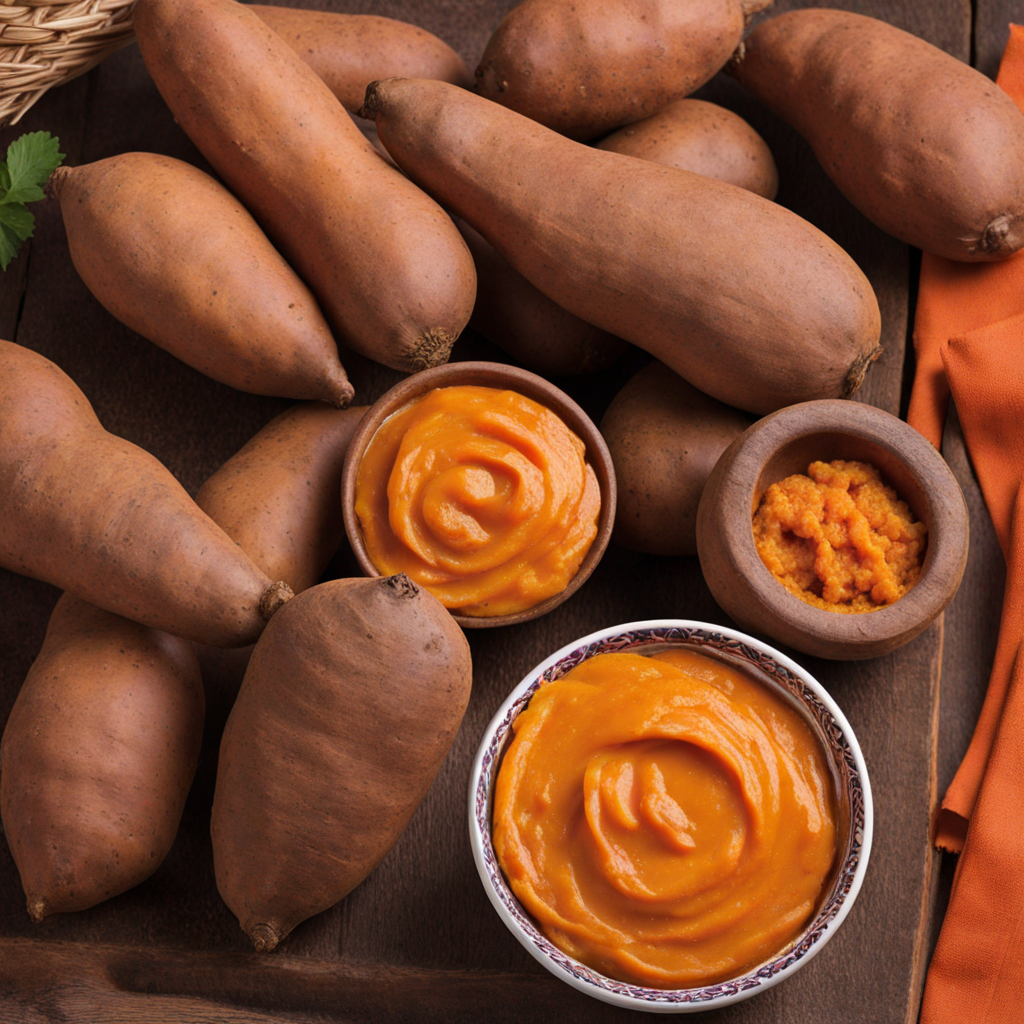Chipa So’o Ku’i
Chipa So’o Ku’i is a delightful Paraguayan dish that embodies the rich culinary traditions of the region. This savory pastry is made primarily from corn flour, which gives it a distinctively soft and chewy texture. The dough is often enriched with cheese, providing a creamy and slightly tangy flavor that perfectly complements the natural sweetness of the corn. The addition of eggs and milk results in a moist, tender bite, making it a popular choice for breakfast or as a snack throughout the day. What sets Chipa So’o Ku’i apart is its unique filling, typically consisting of seasoned ground meat, such as beef or pork, mixed with a medley of spices and herbs. This hearty filling provides a robust contrast to the delicate exterior, creating a satisfying balance of flavors. The dish is often baked until golden brown, allowing the cheese to melt and the outer crust to develop a slightly crispy texture, enhancing the overall enjoyment of each bite. This culinary gem is not just a treat for the palate; it also reflects the communal spirit of Paraguayan culture. Traditionally, families gather to prepare Chipa So’o Ku’i, sharing stories and laughter as they roll out the dough and fill each pastry. Whether enjoyed at home or found in local markets, this dish offers a taste of Paraguay’s rich heritage, inviting adventurous food lovers to explore its delicious and comforting flavors.
How It Became This Dish
The History of Chipa So’o Ku’i: A Culinary Gem of Paraguay #### Origins and Ingredients Chipa So’o Ku’i, a traditional Paraguayan dish, is a delightful representation of the country's rich culinary heritage, combining indigenous and colonial influences. The name itself hints at its roots: "Chipa" refers to a type of cheese bread made primarily from manioc flour (tapioca flour) and cheese, while "So’o Ku’i" translates to "meat filling." This dish elegantly marries the two primary components—tender, cheesy dough enveloping a savory meat mixture, often comprising ground beef or pork, onions, and spices. The origins of Chipa date back to the indigenous Guaraní people, who were among the first inhabitants of Paraguay. They cultivated manioc (cassava), which is a staple ingredient in many traditional Paraguayan foods. The Spanish colonization in the 16th century introduced European culinary practices, including the use of cheese, which transformed the indigenous base into what we now recognize as Chipa. #### Cultural Significance Chipa So’o Ku’i holds a special place in Paraguayan culture, signifying more than just a culinary delight; it embodies the fusion of traditions and the communal spirit of the Paraguayan people. It is often prepared for special occasions, family gatherings, and festivals, serving as a symbol of hospitality. The dish is particularly popular during Lent and Holy Week, where its preparation is a communal event, bringing families and communities together. Throughout Paraguay, Chipa So’o Ku’i is celebrated for its versatility. Depending on the region, variations in the recipe may include different types of cheese, herbs, or spices, reflecting local tastes and customs. This adaptability showcases the dish's ability to evolve while maintaining its core identity—a hallmark of Paraguayan cuisine. #### Preparation and Technique The preparation of Chipa So’o Ku’i is both an art and a science. The dough is made by combining manioc flour with cheese (traditionally Paraguayan cheese, which is semi-soft and has a mild flavor), eggs, and milk or cream. The mixture is kneaded until it forms a smooth, pliable dough. The filling, typically a sautéed mixture of meat, onions, and seasonings, is then encased within the dough, shaped into small balls or patties, and baked until golden brown. The technique of making Chipa So’o Ku’i has been passed down through generations, often taught in family kitchens, where the emphasis is on the communal aspects of cooking. It is not uncommon for multiple generations to gather to prepare the dish, sharing stories and laughter as they work together. This communal preparation reinforces familial bonds and cultural identity, fostering a sense of belonging among those who partake in the process. #### Evolution Over Time As Paraguay has modernized, so too has the preparation and consumption of Chipa So’o Ku’i. While traditional methods remain cherished, contemporary adaptations have emerged. With the rise of urbanization and migration, many Paraguayans now prepare Chipa So’o Ku’i in their homes, using readily available ingredients and adapting recipes to suit modern tastes. Some variations may include the use of more accessible cheeses or the incorporation of local spices and herbs, reflecting the diverse influences of global cuisine. The dish has also made its way into restaurants and street food stalls, where it is enjoyed by locals and tourists alike. Street vendors often serve Chipa So’o Ku’i fresh from the oven, highlighting the dish’s aromatic appeal and its deep cultural roots. This commercialization has helped to introduce Chipa So’o Ku’i to a broader audience, showcasing Paraguayan culinary traditions to the world. #### Regional Variations Within Paraguay, there are numerous regional variations of Chipa So’o Ku’i that reflect local ingredients and culinary preferences. For instance, in the eastern regions, the dish may be prepared with different types of cheese, such as "queso Paraguay," a fresh cheese that lends a distinct flavor and texture. In contrast, areas with a stronger influence from the Brazilian border may incorporate more spices or even tropical ingredients, such as peppers or herbs unique to the region. Each variation tells a story, encapsulating the history and culture of its region. These local adaptations serve to reinforce local identity, creating a sense of pride among communities and ensuring that the legacy of Chipa So’o Ku’i continues to flourish. #### Chipa So’o Ku’i Today Today, Chipa So’o Ku’i stands as a beloved symbol of Paraguayan gastronomy. It is not only a dish that represents the meeting of indigenous and European influences but also a testament to the resilience and creativity of the Paraguayan people. As culinary tourism grows, visitors to Paraguay are increasingly seeking out traditional foods like Chipa So’o Ku’i, eager to experience the flavors and stories behind the dish. Furthermore, the resurgence of interest in traditional and artisanal foods has led to a revival of interest in the craftsmanship associated with making Chipa So’o Ku’i. Cooking classes and workshops focusing on this cherished dish have become popular, allowing both locals and tourists to engage with Paraguayan culture through its cuisine. #### Conclusion Chipa So’o Ku’i is more than just a delicious meal; it is a narrative woven into the fabric of Paraguayan history and identity. The dish reflects the convergence of cultures, the importance of community, and the rich agricultural heritage of the region. As it continues to evolve and adapt to modern tastes while retaining its traditional roots, Chipa So’o Ku’i exemplifies the enduring power of food as a means of connection, celebration, and cultural expression. In every bite, one can taste the history, the stories, and the love that have gone into this culinary masterpiece, ensuring that it remains a cherished part of Paraguay's gastronomic landscape for generations to come.
You may like
Discover local flavors from Paraguay


